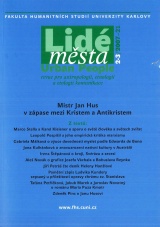Znovuzrození nativní kultury v Austrálii
Péče o rodinu a ženská spiritualita
DOI:
https://doi.org/10.14712/12128112.3757Abstrakt
This article discusses contemporary Aboriginal efforts for cultural self determination and self management in the context of Indigenous cultural revitalisation. It deals with a case of a how an Indigenous women’s child care organisation engages in revitalisation of traditional Australian Indigenous culture in urban context. I will address the principles of a women’s Indigenous Family Care centre, Kummara, in Brisbane (Queensland) where I volunteered, and maintained an ethnographic research. Kummara is based on family care, strengthening of women’s business, and reconnecting Aboriginal women to their cultural role. The organisation addresses the consequences of the Stolen Generations which was a forcible separation of Aboriginal children from their families, their re-education and Christianisation for the duration of 50 years (1910-1969) of Australian history. Main points of this study are that Aboriginal women practicing family care and women’s spirituality in Kummara, contribute to revitalisation of traditional Indigenous culture. This occurs mainly in education of children and young people (implementing rites of passage and parental programs), and in reconnecting to the traditional role of women in family, community and in spiritual life. In the Aboriginal context of health, the women in Kummara engage in a process of cultural, spiritual and emotional healing. They have adapted their ways of doing this to modern society and have been influenced by different Western and other cultural concepts while still trying to preserve elements of their ‘traditional’ past. By nature, the women’s perceptions of what is Aboriginal today differ, as their personalities differ. Therefore, the process of revitalising the women’s culture seems to be inconsistent. Similarly to other Aboriginal institutions, it may also be driven by various political interests and aims as it is balancing in between the mainstream and the community demands. I argue that Kummara is a good example of how fruitful, though complicated, it is to find a common definition of Aboriginal culture that can be said to be shared. What I can bring into the debate of cultural invention is an acknowledgement that the women of Kummara are aware of the innovative and adaptable nature of their own culture, communicate it, and understand it as a necessary process of cultural dynamism and change.
Stahování
Publikováno
Jak citovat
Číslo
Sekce
Licence

Tato práce je licencována pod Mezinárodní licencí Creative Commons Attribution-NonCommercial-NoDerivatives 4.0.


